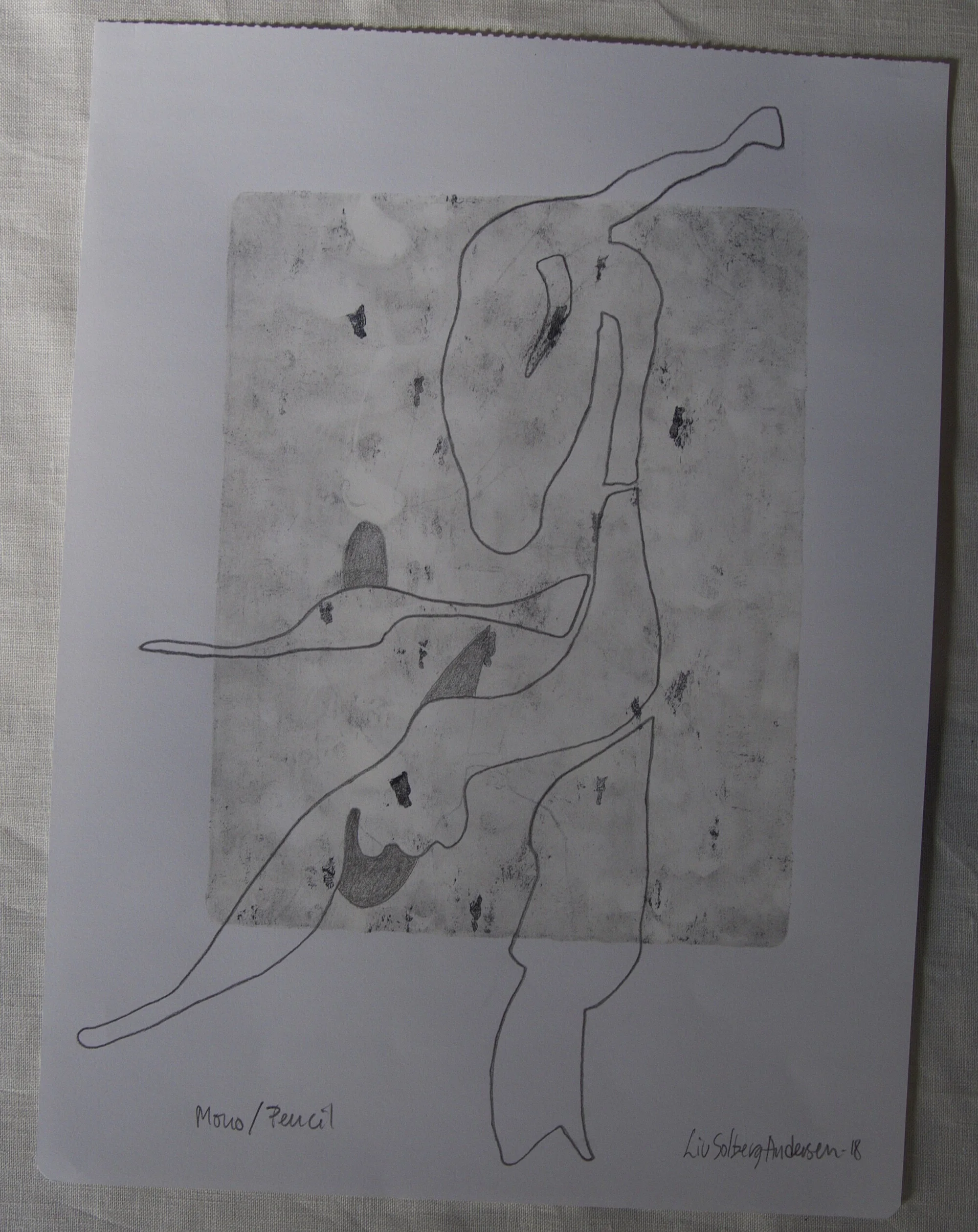Liv Solberg Andersen and Janet Brady
Artists Liv Solberg Andersen, from Rjukan in Norway and Janet Brady from Bury in Lancashire, UK joined us for a week at the end of October 2018.
When two artists book together with matching dates they both receive 30% off their stay.
How did you meet?
LSA: We met at the Slade School in London at an Easter course in 2017. The name of the course was ‘The Expanded Field of Drawing’ and it was my first course in London, my first at the Slade. We worked side-by-side.
JB: We worked side-by-side, just by chance.
LSA: I remember Janet asking if I’d like for her to take some pictures with my phone, for example, so that I’d have some good pictures. From there, we talked about a lot, and in fact Janet is the only person I have kept in contact with since that course.
Did you stay in touch because there were similarities in your work? Or was it more that you became friends?
JB: I think both really. (To Liv) What do you think? Do you think there are similarities in our work?
LSA: Maybe in approaching our work. I think we are both open, and also not too confident in our work. We both want to investigate… curious. We are curious.
JB: And it’s good to share ideas and then to find that other people are thinking the same way, and having the same problems. I think you enjoy a vast landscape and so do I, and not everybody does. There were others on the course with a similar attitude but their work would be – I don’t know – meticulous designs based on flowers for example, or people’s faces, or abstract, but your work stood out as being very large and vigorous.
LSA: I guess we are both interested in landscapes. Maybe you because of your geology background?
JB: And maybe you because you live in the shade of an enormous mountain (laughs).
LSA: Yes, both the good and the bad. It’s beautiful and the seasons change the mountain, like they do here I guess, snow / not snow, pink sky, clouds…
JB: Like this hill here at the back (of the CDN studio), with the chapel on the top. It changes enormously according to whether it’s first thing in the morning or last thing at night. It’s beamng and golden in the morning and then it’s closed in and perhaps threatening – looming over the village – later on and I personally like the way such strength of scenery can dissolve away to a golden glow when the mist comes down.
LSA: That sounds really poetic.
JB: Well actually, I do think think painting poetry is really what I want to do, in a funny sort of way. We’ve had many discussions that really helped me to see that you have to get behind the words used to describe something, to get to the essence of what you might have felt as a very young child, or right at the beginning of time, before words were pinned on these things and the things we’re constrained by vocabulary. It’s not necessarily feeling, it’s the essence of the thing.
LSA: We were talking about that inbetween thing, not this, nor that, but something in between.
What do you think makes a good studio buddy, the person working at the table beside you?
LSA: A person who asks questions and is open, and who is interested. They’re the main things I’d look for.
JB: Someone with the quality of empathy, without being too forceful.
LSA: Especially someone interested in the work, who wants to talk about the work and how to make the work… well, work.
JB: It helps you to understand, having to express your thoughts to the other person, and if that person is just telling you all about themselves your mind shuts down. It’s really nice to be able to be open like that.
What are you working on this week? Did you come completely open, or with a plan? Or are you continuing something that you’d already started?
JB: Having been here before, and explored and got to know and really love the area I wanted to push that forward – to think, what is it about it here that I really love?
LSA: I’m not sure. I’m very much between exhibitions at the moment, about four this quarter, so to breathe and not work so seriously. I’m serious, but I’m a bit calmer and sleeping a bit longer in the mornings and enjoying the sun and I feel a bit lazy. I get bothered by my conscience if I don’t work, and I feel I should work. I’m trying to tell myself that I’m allowed a vacation.
Do you think that it’s a good idea to have a fallow period, or at least a low productivity period?
LSA: I think it’s important, and I think it’s important to have something to do because then I feel like I’m working but I don’t know what it’s going to be. I think it’s lovely just to try things. For example the gelli plate (we have a printing plate called a gelli plate in the CDN studio). I didn’t know about that, and it’s an inspiration to get to know new techniques, making collographs too, that’s really inspiring, so I hope I will do something with it when I get back.
If anyone reading this interview is thinking about spending time on their work with us here at Cel del Nord, what advice would you give them?
LSA: Bring good walking shoes if you want to experience the beautiful landscape. And, bring paints and big paper or canvas to work in the landscape.
JB: Make sure you get Google Translate on your phone and visit the local shop.
LSA: Bring other things you want to work with too, some different materials.
JB: And bring good quality watercolour paper, I think some good rolls. I like to work large, so having a large roll that you can take on the plane, that would be good.



